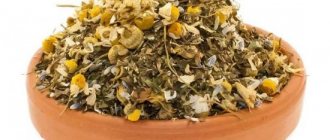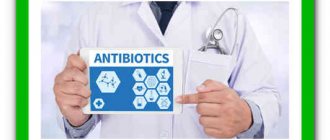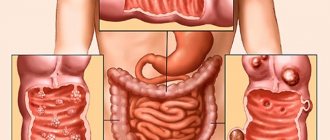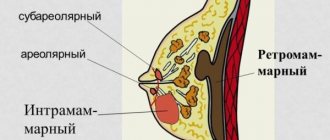Anatomical features of the colon
The colon is the lower part of the intestine that extends into the posterior opening.
The anatomical structure of the large intestine has its own characteristic differences in relation to the structure of the small intestine.
Colon
For example, it is shorter, but much thicker from the small intestine. In addition, they differ in color: the small intestine has a richer gray color. The length of the colon is from 1.5-2 meters , in accordance with the age of the person.
In turn, the large intestine has:
- The cecum with its appendix (appendix).
- The colon, which in turn is divided into subsections: ascending, transverse, descending.
- Sigmoid.
- Rectum.
The large intestine has several layers:
- Slimy.
- Submucosal.
- Muscular.
- Serous.
The large intestine performs a number of functions:
- Digestive.
- Excretory.
- Protective.
- Suction.
As you can see, the large intestine is a significant organ, and the development of any pathological processes in it is dangerous to human health.
Treatment
Oncologists at the Yusupov Hospital remove a malignant tumor of the colon using surgery. Resection of the affected area of the colon along with the mesentery is performed, and lymph nodes are also removed. If cancer of the ascending colon is detected, treatment is carried out by right hemicolectomy. The tumor of the cecum is removed using the same method. The surgeon removes the lymphatic system, the entire right half of the colon, including one-third of the transverse colon, ascending colon, cecum, and portion of the hepatic flexure.
Preparing for surgery
Regardless of the nature and scope of the operation, doctors at the Oncology Clinic carry out general and special preoperative preparation, which largely ensures the success of the surgical intervention. With the help of modern infusion agents, water-electrolyte imbalances are eliminated, protein levels are normalized, and hypochromic anemia and intoxication are combated. Patients are given intravenous infusion of drugs and blood components, glucose with vitamins, and electrolyte solutions. At the same time, measures are taken to improve the function of vital organs (heart, lungs, adrenal glands, liver, kidneys).
Special preparation is aimed at removing feces mechanically. Patients are given laxatives, given enemas, and pathogenic microflora, which is abundantly present in the intestinal contents, is suppressed with medications.
For preoperative preparation of the large intestine, an elemental diet is used. 3-5 days before surgery, doctors prescribe special medications to patients that contain all vital food ingredients in refined form.
Make an appointment
Palliative resections
In the absence of the technical ability to perform radical surgery, surgeons perform palliative resections of the colon. The choice of palliative intervention depends on the following factors:
- Localization of the neoplasm;
- Degree of tumor spread;
- Anatomical features of the location of the primary lesion;
- Complications of the tumor process;
- General condition of the patient.
If it is impossible to remove the tumor of the right half of the colon, surgeons perform a bypass ileotransverse anastomosis. For inoperable neoplasms of the descending colon and splenic angle, a bypass transversosigmoanastomosis is created. If a tumor of the final part of the colon is detected, a proximal colostomy, single-barrel or double-barrel unnatural anus, is applied.
Chemotherapy
Chemotherapy in the treatment of colon cancer is used for different purposes - to shrink the tumor before surgery, stop its growth, destroy cancer cells, and metastases. Colorectal cancer is a tumor that is quite resistant to cytostatics. Chemotherapy for colon cancer is prescribed by a doctor depending on the size of the tumor and the presence of metastases, and is carried out in courses.
If regional lymph nodes are affected or the tumor has invaded the serous membrane of the intestine, adjuvant chemotherapy is performed. If there is a potential risk of developing metastases to other organs, the most active chemotherapy is performed. After several cycles of treatment with antitumor drugs, the state of metastases is assessed and the lesions are removed. After surgery, adjuvant chemotherapy is used.
What contributes to the development of pathology
Any disease does not appear on its own; a number of root causes and prerequisites contribute to its occurrence. What becomes the detonator of an inflammatory abnormality of the colon? Unfortunately , there are many factors that lead to the formation of this pathology:
- Infections.
- Poor nutrition.
- Intoxication of the body with low-quality products.
- Poor blood circulation in the large intestine.
- Heredity.
- Imbalance of healthy microflora.
Inflammation of the large intestine can manifest itself in the following pathologies:
- Enteritis.
- Duodenitis.
- Mesadenitis.
- Colitis.
In this case, the inflammatory phenomenon can occur in:
- Chronic form (from 6 months).
- Acute form (up to 12 months).
In addition, pathology can develop in any part of the intestine:
- Blind.
- Direct.
- Duodenum.
- Sigmoid.
- Large intestine.
Constipation is a common cause of colon inflammation
Colitis (inflammation of the mucous membrane of the large intestine) can be of several types:
- Spicy.
- Chronic.
- Ulcerative.
- Spastic.
- Crohn's disease.
Diagnosis of pathologies is carried out only by a doctor, who, after examination, prescribes appropriate treatment.
Signs of inflammation
The disease manifests itself with multiple symptoms, but their presence largely depends on what type of inflammation of the colon is progressing.
The following symptoms are typical for an inflammatory process of any degree:
- Flatulence.
- Intense abdominal pain.
- Unstable stool (diarrhea alternates with constipation).
- General weakness.
- Prostration.
- Vomit.
- Nausea.
- High body temperature.
- Loss of appetite.
- Traces of mucus and blood in the stool.
If inflammation of the colon is observed in acute form, then there is severe diarrhea, frequent desires to go to the toilet, which is accompanied by pain in the abdominal cavity and in the lower part of the rectum.
In the absence of timely treatment, the disease becomes chronic, its symptomatic picture is the same, but the treatment of the disease becomes much more complicated.
Ulcerative colitis is distinguished by the fact that when it appears, characteristic ulcers form, and it is characterized by a very protracted development, when exacerbations are replaced by periods of remission. As a rule, the patient complains of cramping pain in the lower abdomen, and after a while, heavy bleeding appears at the time of defecation.
During periods of exacerbation, bleeding can occur in a continuous stream , which is dangerous due to a decrease in blood pressure. In addition, there is a risk of perforation and expansion of the large intestine and the occurrence of peritonitis.
Crohn's disease and ulcerative colitis
With spastic colitis, feces take the form of dense lumps. This type of colitis is more mild than its other varieties. To confirm the diagnosis, stool is sent for laboratory, X-ray and sigmoidoscopy examinations.
Crohn's disease is a chronic inflammatory process in the large intestine that affects the entire intestine, stomach and esophagus, with fistulas and intestinal obstruction observed.
Features of the disease
Disruption of the gastrointestinal tract occurs for a number of reasons. Dysbacteriosis is the result of a decrease in the number of beneficial microorganisms and an increase in the number of putrefactive bacteria that interfere with normal digestion. Therefore, in order to restore the intestinal microflora using folk remedies, it is necessary to establish the source of the disease.
Dysbacteriosis is characterized by an increase in the number of pathogenic bacteria in the intestines, interfering with its normal functioning.
Causes that cause digestive system disorders in adults include:
- decreased immunity;
- chronic gastrointestinal diseases;
- frequent stressful situations;
- abuse of enemas and laxatives;
- unbalanced nutrition system;
- long-term treatment with antibiotics;
- neglect of personal hygiene rules;
- infectious diseases;
- strict diets that limit the intake of vitamins and nutrients necessary for the healthy functioning of the body.
The cause of illness and poor health can be caused by one or several factors from the list. The most striking symptoms of intestinal dysfunction are:
- vomit;
- loss of appetite;
- nausea;
- increased flatulence and rumbling in the stomach;
- unpleasant cramps in the abdominal area;
- regular headaches;
- insomnia;
- chronic fatigue;
- the appearance of a foreign taste in the oral cavity;
- bowel dysfunction (constipation or diarrhea);
- general poor health and a state of apathy.
- anemia and vitamin deficiency.
dysbiosis is accompanied by poor health associated with impaired intestinal function
To avoid complications and stop the disease at the primary stage, the remedy for dysbiosis is selected taking into account the characteristic symptoms and the root cause of the pathology.
Therapeutic measures
When the first symptoms of the disease appear, you cannot postpone a visit to a gastroenterologist; the further the inflammation progresses, the more difficult it will be to get rid of the disease.
plays an important role in the treatment of the disease . Medications of various forms (suppositories, tablets, ointments) are also prescribed to treat colon symptoms and treat the factors that provoked the development of the pathology. If the disease has reached an advanced stage, surgical intervention is recommended.
So, what and how to treat the colon with intestinal inflammation?
Based on the nature of the pathology, the doctor may prescribe:
- Painkillers.
- Anti-inflammatory drugs.
- Means that improve intestinal motility.
- Medicines for diarrhea.
- Antispasmodics.
- Antibiotics.
To treat inflammation of the colon, doctors prescribe suppositories
The treatment process of the disease, so to speak, is divided into two stages. First, the symptoms of the disease are relieved, and then, when remission is noted, therapy is aimed at maintaining the achieved result for as long as possible, implying a final cure.
Rectal suppositories
During treatment, doctors prescribe suppositories that have a local anti-inflammatory effect. Medicines of this form are convenient to use and can be used at any time:
- Salofalk.
- Ultraproct.
- Proctosan.
- Natalsid.
- Papaverine.
- Fluocortolone.
- With propolis.
- With sea buckthorn oil.
All of them have a high therapeutic effect, but their purchase must be agreed with your doctor.
Preparations in ointment form
For inflammation of the colon, medications in the form of ointments are prescribed for the rapid healing of anal fissures, wounds of the lower rectum, as well as suppressing the brightness of hemorrhoids that form during constipation, which avoids additional irritation of the large intestine.
Well proven:
- Vishnevsky ointment.
- Heparin.
- Fleming.
- Bezornil.
- Ichthyol.
- Relief.
- Hepatrombin.
The use of ointments helps eliminate irritation and inflammation near the anus, which are formed due to frequent diarrhea or constipation.
Pills against illness
Among the medications in tablet form for inflammation of the large intestine, the following are recommended:
- No-shpa.
- Glucosalan.
- Decitel.
- Loperamide.
- Linex (capsules).
- Mezim-forte.
No-shpa
The doctor prescribes all these drugs on an individual basis and their dosage is also determined based on the severity of the disease.
Treatment of irritable bowel syndrome in children
Sometimes children and teenagers can also suffer from this disease. Recently, treatment of irritable bowel syndrome in children has been carried out more and more often. This is due to the fact that modern schoolchildren are very busy with studies and additional clubs and sections. As a result, many of them are constantly stressed and cannot eat properly. In addition, some of today's children excessively abuse fast food and other unhealthy and heavy foods. In this case, the pediatrician, after confirming the diagnosis, recommends that such adolescents and children undergo regular physical activity, proper allocation of time for study and rest, as well as diet and regular meals, avoiding carbonated drinks, sweets with sugar substitutes and similar products. In this age group, home treatment for irritable bowel syndrome is not recommended. Indeed, for a fast-growing organism, limiting the consumption of vitamins and microelements can be disastrous. And some medications can cause irreparable harm to it. Therefore, only a doctor should select therapy and diet.
Drugs for the treatment of irritable bowel syndrome
Drug therapy and medications for this disease can also be combined with some home techniques. Their use should not replace primary therapy and should be agreed with the attending physician. Treatment for irritable bowel syndrome with folk remedies may include acupuncture and reflexology. In addition, many diets and restrictions on the consumption of certain types of food can also be attributed to folk methods.
Treating Irritable Bowel Syndrome at Home
It is also possible to treat irritable bowel syndrome with herbs. At the same time, consuming aloe vera has a good effect. In addition, some other herbs or herbal infusions can help improve well-being. Many types of folk laxatives and antidiarrheals based on herbs are effective. Such medications are now available in many pharmacies. They are distinguished by their low cost and minimal side effects. But at the same time, you should also consult a doctor when taking them. Such techniques are usually used only as auxiliary ones and cannot replace professional treatment prescribed by specialists.
It is believed that it is almost impossible to completely and permanently get rid of this problem, even with proper treatment and diet. But therapy in most cases helps reduce the number of exacerbations and improve their course. In the period between attacks, treatment of irritable bowel syndrome is quite possible at home. It includes proper diet and dietary restrictions. In addition, herbal prevention also helps to avoid exacerbations.
People diagnosed with this disease should avoid stress and manage their time properly. They should take care of regular meals and not limit themselves to snacks. Some patients are advised to change their work to a calmer and less intense one. Active sports and outdoor recreation give good results. A healthy psychological climate in the family also helps to reduce the manifestation of the disease. Therefore, treating irritable bowel syndrome at home can be not only a problem for the patient himself, but also a task for all members of his family.
Traditional methods of treatment
Treatment of symptoms of inflammation of the colon with folk remedies is also of no small importance. Alternative medicine has a sufficient number of recipes against this disease. Many of them really have healing powers and give excellent healing results.
Various tinctures, jelly, and teas have proven themselves well from folk remedies for the treatment of the colon.
Infusion of St. John's wort herb
Take 2 tbsp. l. plants and pour 250 ml of boiling water , leave for 6 hours (preferably in a thermos). Strain and drink 1 tbsp. l. 3 times/day .
Chicory milk infusion
Take 1 tbsp. l. (10 g) chicory, pour 250 ml of homemade milk and leave for 1 hour . Next, strain, divide into 4 parts and drink 4 times a day . You can add a little honey to improve the taste. Chicory, like its flowers, has antimicrobial, tonic and anti-inflammatory properties.
Flaxseed decoction
You need to take 15 g of seeds and pour a glass of hot water and leave for several hours. 1 glass warm in the morning before breakfast . Before use, add 1-2 tsp to the decoction. olive oil.
Mint infusion
Mint has long been used in folk medicine to treat the colon. You will need 2 tbsp. l. peppermint, which is poured with 400 ml of boiling water. Leave for 1 hour and use throughout the day.
Oatmeal jelly with kefir
For medicinal jelly you will need 4 tbsp. l. oatmeal, and take 4 times more water. Pour the oatmeal into 3 liter container, for example a jar, fill it with 1 glass of homemade kefir, and then add warm water so that the total liquid is 1/3 of the container . The mixture is mixed well, covered with a tight lid and wrapped. The dishes are kept in a warm place for two days, then the liquid is filtered through a sieve.
At the first symptoms of pathology, it is recommended to consult a doctor
The thick mixture and the oats remaining in the sieve must be diluted separately with two liters of water and also stored in different containers. The finished medicinal jelly is stored in the refrigerator, drunk 3 times a day, one sip of each drug.











